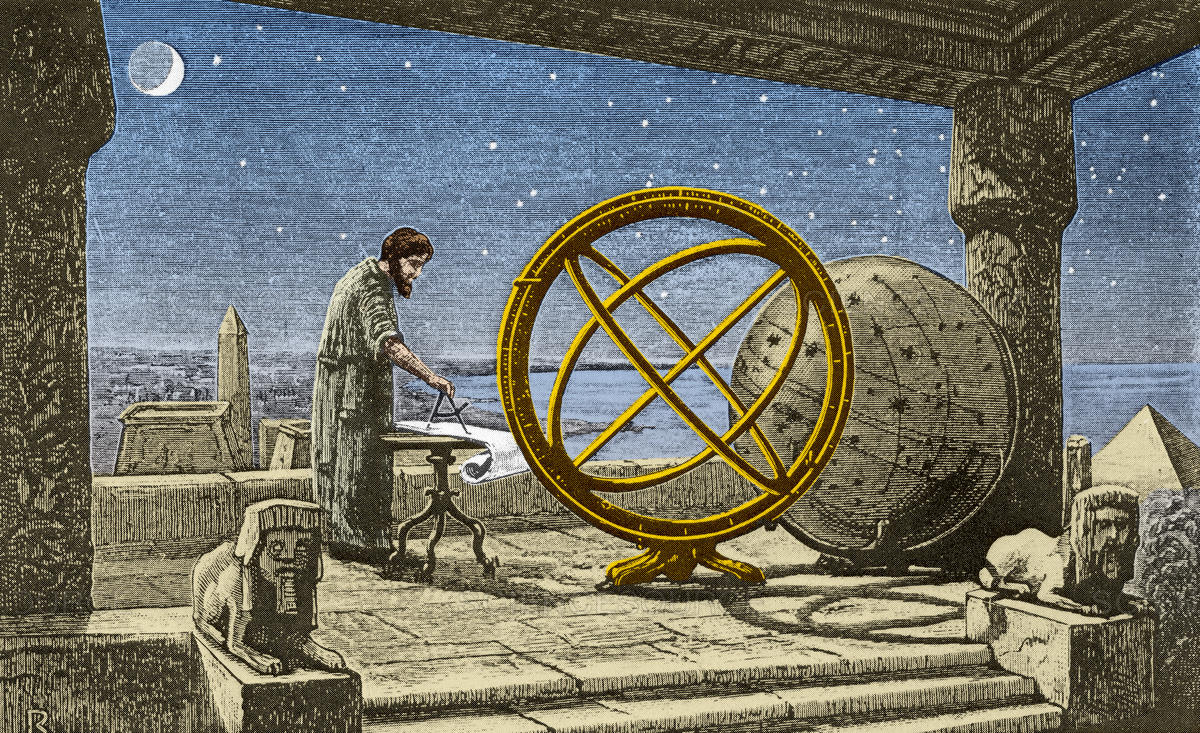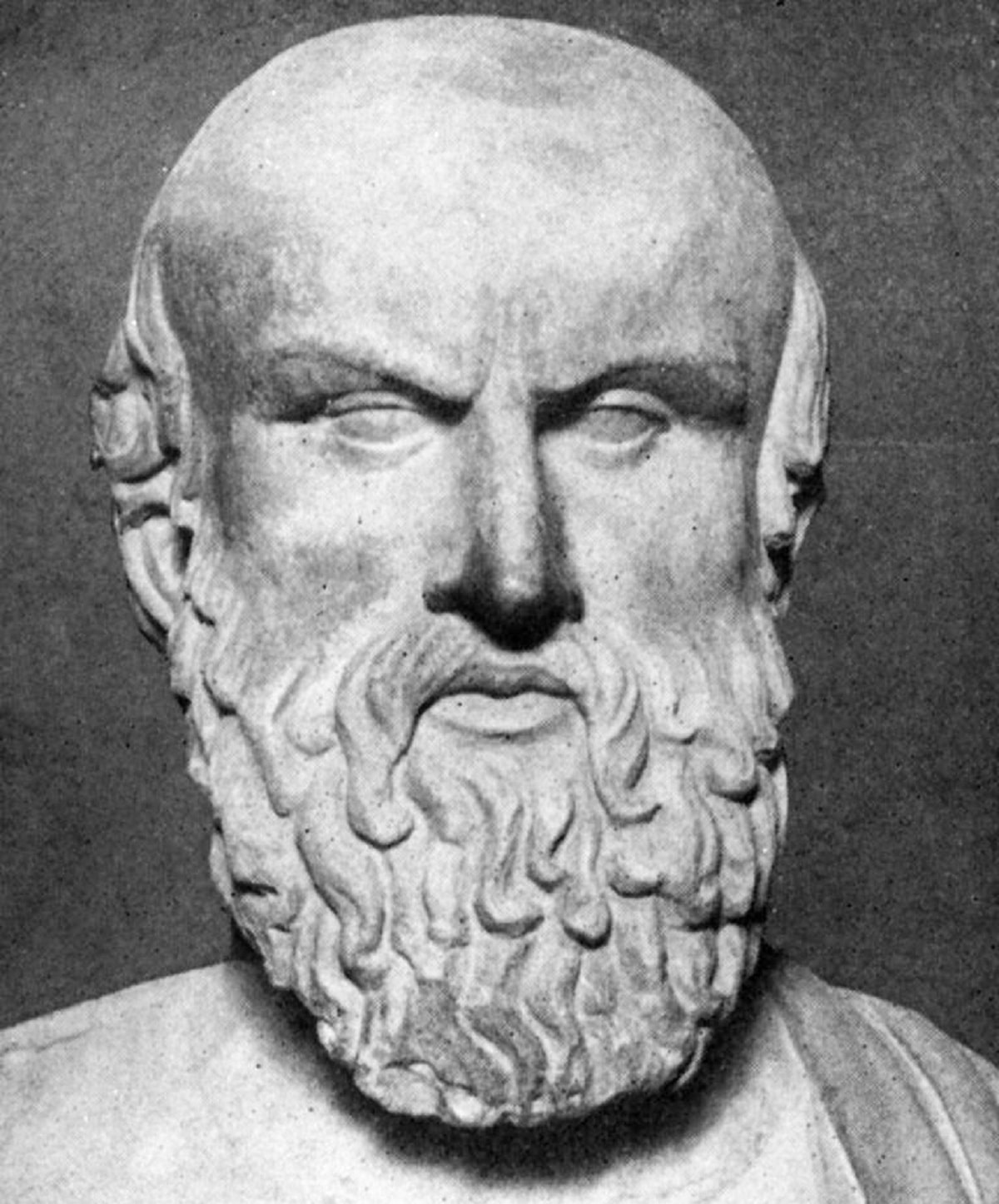
In the world of science there have been numerous scientists who have been known for their great contributions that have helped a great advance. Today we are going to talk about Hipparchus of Nicaea. He is a Greek gourmet and mathematician who was known for bringing numerous advances in both branches of science. Much is unknown about his life but much is known about his contributions.
In this article we are going to tell you who Hipparchus of Nicea was and what his exploits were in the world of astronomy and mathematics.
Biography of Hipparchus of Nicea

This man was born in Nicea, being the current Turkey, in the year 190 BC At that time, not many data were known, so few know his true biography. All the data that have been collected on this scientist seem to indicate that he worked in his hometown studying the annual weather patterns of that area. This type of work was quite common for all Greek astronomers of that time. This is because it was used to calculate the beginning and end of rainy and stormy seasons.
Among the most important achievements of Hipparchus of Nicea we find the elaboration of a catalog of stars and the calculation of the precession of the equinoxes. He could also know the distance between the earth and the moon or he could have been the father of trigonometry. The problem is that not much is known about his life. Some authors like Ptolemy left very good feelings about Hipparchus's research. Most of this man's professional life took place in Rhodes.
The main field work was astronomy. In this area it was considered one of the most important since at that time hardly anything was known about the celestial vault. Among one of his achievements, Hipparchus of Nicea He was one of the pioneers in creating a quantitative model of the movements between the moon and the sun. In addition, he conducted numerous studies that managed to establish fairly accurate measurements. This scientist took advantage of some astronomical techniques that had been created by some previous scientists from Chaldea and Babylon. Thanks to this knowledge, a good quality of work was achieved and their discoveries became the basis for later research by other astronomers.
Contributions of Hipparchus of Nicea

We are going to analyze carefully what were the contributions to science that made Hipparchus of Nicea so famous. He was considered one of the most important scientists and his influence lasted for centuries. Despite the importance of this scientist, little is known about his life. Of all the work he did, it has only survived to this day one of them known by the name of Commentary on Aratus and Eudoxus.
Given the lack of witnesses in direct sources that corroborate that their contributions were stupendous, we would look at the writings of Ptolemy and Strabo. The first, in particular, repeatedly quoted Hipparchus in his Almagest, a great astronomical compendium written in the second century AD. Although not much is known about his life, there are some biographers who point out that Hipparchus built an astronomical observatory in Rhodes with which he could develop his research. The problem with not knowing too much about it is that it was not known what instruments he used to develop his research. This is a fundamental detail when establishing the guidelines that served as the basis for later studies by other astronomers.
Again, we see that Ptolemy pointed out that Hipparchus built a theodolite in order to be able to measure angles. This is how he was able to calculate the distance between the sun and the moon. As mentioned before, one of the best feats for which Hipparchus of Nicea is remembered is by making the first catalog of stars. At that time, there was not much knowledge about astronomy. However, Hipparchus discovered a new star located in the constellation Scorpio.
The discovery of discovering a new star in the sky inspired him enough to create a catalog that included some 850 stars recognized at that time. All the stars in this catalog They were classified according to their luminosity according to a 6-magnitude system. This method is very similar to the one used today to classify stars. He also built a celestial globe that showed the constellations and stars.
Unfortunately, over the years, the original catalog has not been preserved. All that is known about this work comes from the work of Ptolemy, who used his studies as the basis for creating his own catalog known as the Almagest. According to experts, Ptolemy was only responsible for copying what Hipparchus discovered and was able to expand it with his own discoveries.
Precession of the equinoxes

Another of the feats of Hipparchus of Nicaea was the precession of the equinoxes. This movement is defined as the movement of the equinoxes along the ecliptic that is motivated by the cyclical precession of the axis of rotation of the earth. When Hipparchus was compiling his star catalog, he noticed that some stars were moving compared to previous measurements. This fact made him reflect on whether it was the stars that were moving or the earth that had changed its position. This assumption led him to establish the movement known as precession. This motion is broadly treated as a kind of cyclical wobble that affects the orientation of the earth's axis of rotation. Each cycle consists of 25.772 years.
After the movement of rotation and translation of the earth, the precession was the third movement discovered. The cause of this movement is the effect of gravity between the sun and the moon on the earth. This force of gravity affects the equatorial bulge of the planet.
I hope that with this information you can learn more about Hipparchus of Nicea and his contributions to science.
There are some biographers who point out that Hiparco built an astronomical observatory in Rhodes with which he could carry out his research. correct semantics.